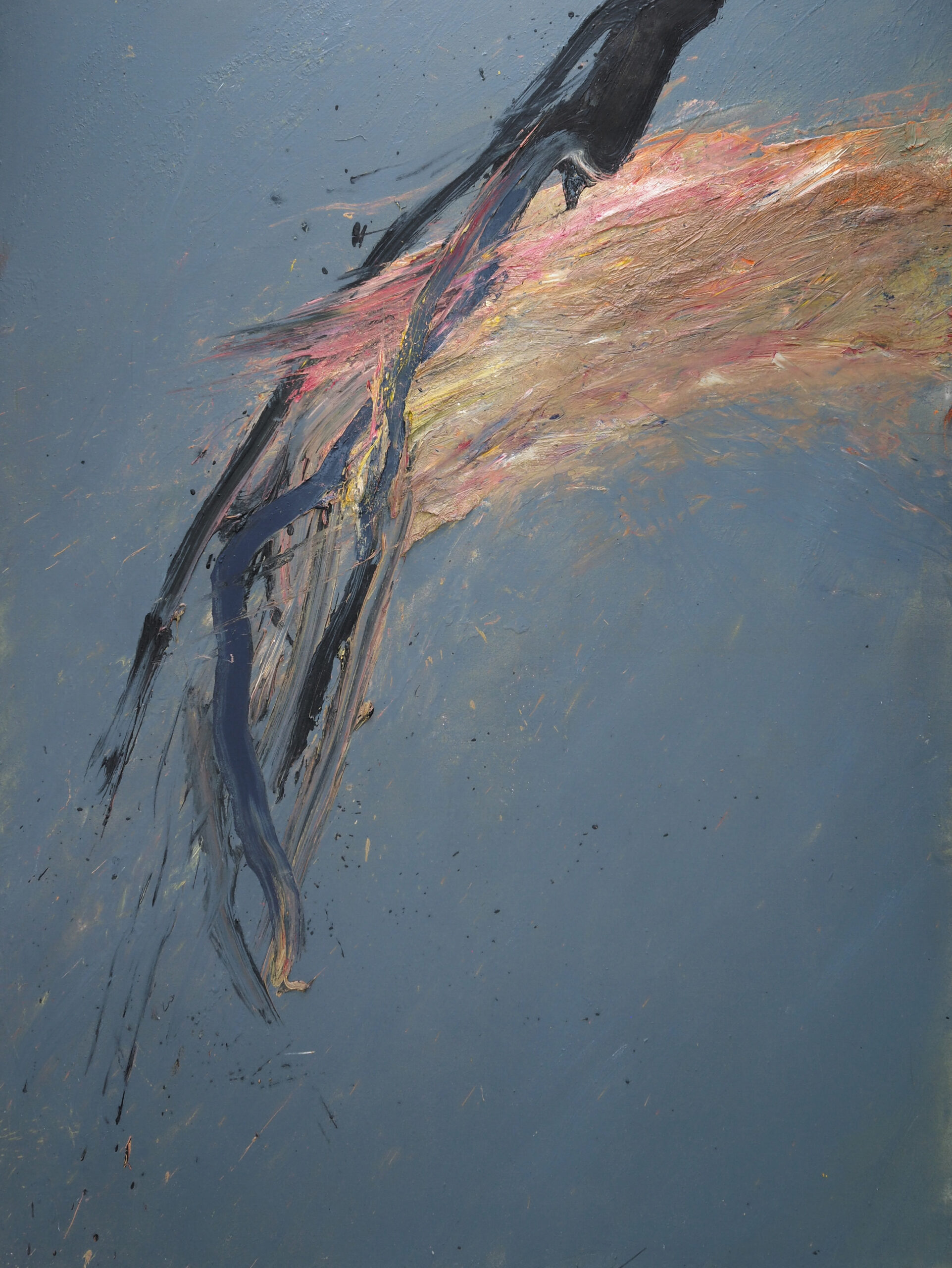German | English
While the foundational concept of using constructive counter-elements endured, its realization shifted profoundly in the 70s. Geometric forms and other formal elements no longer seemed necessary to create the tension that transforms the application of color into a painting.
Although this was just the period when Schlieker re-immersed himself in nature and landscapes, it is too simplistic to suggest that organic elements replaced geometric ones. Something more profound was at play.
His aim no longer was to capture the moment but to capture a process or movement – the relentless, merciless interplay of emergence and entropy, the antagonistic forces of becoming and unraveling that define every aspect of life.
Recorded by Christoph Böll’s camera, which left an invaluable record of this process, we see how, in one moment, small, carefully drawn details are washed away while, in another, spontaneous bursts of color develop into central forms.
Genesis of a Painting
The focused, restless oscillation between chaos and order not just aims to „see“, it aims to „be“, thus setting new boundaries from which visual clarity and intensity emerged.
It was a leap which would define the artistic approach for which Schlieker became known and recognized – a unique stance beyond prevailing trends and the at times polarized positions of figurative versus abstract art.
Reflecting on this shift through the lens of a social scientist, it aligns closely with a well-known paradigm in complexity theory called „the edge of chaos.“
In a system of perfect internal order, like a crystal, no further change is possible. At the opposite, in a highly chaotic system like boiling liquid, there is too little structure left to sustain meaningful change. Evolving living systems exist between these extremes – precisely, at the edge of chaos – where they maintain enough order to function while also remaining flexible enough to adapt and transform.
From the 1980s, Schlieker’s paintings truly began to explore this space. The oil-on-canvas paintings in the collection from 1985, 2002, and the diptych from 2003 are examples of the fascinating visual worlds that emerged from here.



